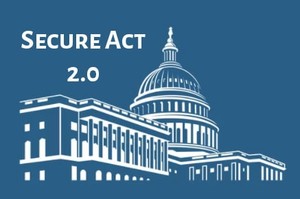Posted on Nov 14, 2023
As part of the SECURE Act, Long-Term, Part-Time (“LTPT”) rules were created in 2019. Effective for plan years beginning after 12/31/2020, 401(k) plans must begin to track employment of LTPT employees and, once eligible, the employees defined as LTPT employees must be allowed to enter a retirement plan solely for deferral purposes.
SECURE 2.0 included language to subject ERISA 403(b) Plans to the LTPT requirement starting in 2025.
SECURE 2.0 reduced the eligibility period to 2 consecutive years of service, starting in 2025. (The 3-year rule continues to apply only for 2024, and only for 401(k) plans.)
- LTPT employees are defined as those working between 500 and 1,000 hours per year for a period of three consecutive 12-month periods. For tracking purposes, the first possible year of the three consecutive 12-month periods was the plan year beginning after 12/31/2020.
- LTPT employees must enter the earlier of the first day of the plan year after having met the eligibility requirements, or 6 months after having met the requirements. The age 21 eligibility requirement continues to apply.
- For calendar year plans, this means the first date that LTPT employees will begin entering the plan is 1/1/2024.
- Union employees and non-resident aliens are exempt from the rule.
- Employers must ensure that employment records and payroll systems accurately track service for part-time employees, and they are timely notified of their eligibility to make elective deferrals.
- These employees can be excluded from non-discrimination testing.
- Employers are not required to make employer, matching, safe harbor or top-heavy contributions on behalf of LTPT employees.
- If any employer contribution is allocated to a LTPT employee, a year of vesting will accrue if they work at least 500 hours during such period (vs. 1000 hours). 12-month periods prior to 1/1/2021 are disregarded for determining 500-hour vesting years.
Guidance is still needed from the IRS on many issues relating to the LTPT rules including, but not limited to, the following:
- Regarding employees in an excluded class that would otherwise be determined to be LTPT employees. It is not clear whether they will continue to be considered excludable.
- Need clarification of the logistics of the 500 - hour vesting rule. Consider not providing employer contribution until that is done.
May want to consider whether to reduce the plan’s service requirement (at least for purposes of salary deferrals) to avoid the LTPT employee rules. Generally, such discretionary amendment must be executed before the end of the plan year for which it’s effective.
This material is provided for informational purposes only, and is not intended as authoritative guidance, legal advice, or assurance of compliance with state and federal regulations.
Back to Blogs Helpful Resource Links

